1. Science vs. Nature
1.1. Environmental Consequences
1.1.1. New technology creates externalities
1.1.1.1. In the Blade Runner, pollution from new technology serves as one among many major negative externalities such that people are in search of other planets to live.
1.2. Dehumanizing
1.2.1. The improvement and advancement of technology drives people away from appreciating the essence of humanity; people become materialistic.
1.2.1.1. In the Blade Runner, the usage of limited light serves as a method to hint the pollution and emphasis on technology. Every scene gives off a dark and eerie atmosphere. There is no sign of nature, like trees or flowers, in the film.
1.2.1.2. In contrast to the emphasis on the materialistic world in the Blade Runner, in Frankenstein, nature is the place where Victor and the Creature turns to assuage their worries and to reflect on their actions. Mary Shelley places emphasis on nature's beauty in that even "unnatural" beings can appreciate nature's beauty.
1.3. The Dangers of Knowledge
1.3.1. Both creators of the stories have challenged the limits of knowledge and went ahead with creating beings that are "unnatural".
1.3.1.1. In Frankenstein Victor was fascinated with the human structure and form and attempted to create his own animated being.,
1.3.1.1.1. Knowledge is power vs. Ignorance is bliss
1.3.1.2. Tyrell, the creator of the replicants, created them as a source of labor to be sent to foreign planets. Replicants were considered the slaves of humans as they were forced to work in harsh conditions that no human can survive in.
2. People should be responsible of their own creations, otherwise it could lead to their downfall
2.1. Tyrell and Victor Frankenstein did not care for their creations at all. They did not guide their creations and taught them the difference between the good and the bad. Instead, left them to fend for themselves.
2.1.1. By neglecting their duties as creators, Tyrell and Frankenstein faced their own death through their man-made creations.
2.2. Medium Priority
2.3. Low Priority
3. Revenge leads to a person's downfall
3.1. The creatures in both stories pursues revenge against their creators.
3.1.1. Their pursuit of revenge eventually leads to their death.
3.1.1.1. In Blade Runner, Roy begins his revenge against Tyrell by killing him, but in turn, his companions and friends were all murdered. He eventually accepts death as he no longer has a purpose to live.
3.1.1.2. In Frankenstein, the Creature was distraught and upset over the fact that Victor died. The Creature felt guilty over Victor's death and accepts his own death by venturing out into the cold icy sea.
3.2. The creator in Frankenstein was blinded by revenge against the Creature for murdering his loved ones, which eventually led to his death.
4. Society has a standard in which "unnatural" beings are not accepted.
4.1. Beings that are abnormal are rejected by society.
4.1.1. The Creature in Frankenstein was rejected and abused by people during his second encounter with humans due to his physical appearance.
4.1.2. For replicants, being tested was considered as different from society's standards. They are not humans.
4.1.2.1. Replicants are consistently being tested to record their actions and feelings that are used to compare to humans.
